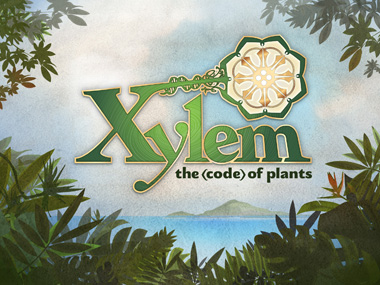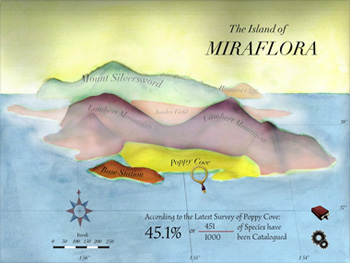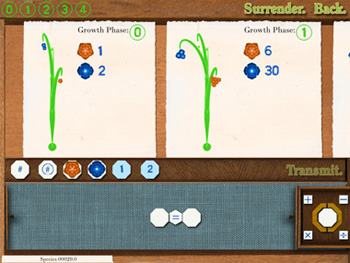
Xylem: The Code of Plants mixes lightweight botany with mathematical puzzles to crowdsource verification of critical software. Screenshot courtesy of UCSC.
Finding bugs and security flaws in essential software could hardly be considered fun – until now. By playing a new game developed by SRI International, in collaboration with a UC Santa Cruz team of computer scientists, any member of the general public with middle school math under their belt can help check for errors in important software. The player takes the role of an early 20th century botanical explorer, examines plants with a "floraphase comparator," and then creates equations to describe the findings. Code checking is woven into Xylem gameplay and occurs behind the scenes.
Xylem: The Code of Plants is one of five games created under the U.S. Defense Advanced Research Projects Agency (DARPA) as part of their new Crowd Sourced Formal Verification (CSFV) program.
The game setting could be considered an excuse to give players math problems without scaring them off, with little actual botany included. However, even for those more interested in chlorophyll than compound equations, the puzzles require only a basic knowledge of algebra and a problem-solver's brain. (Incidentally, "xylem" is the technical term for the water transport system plus the wood in higher plants.)
In Xylem, the player studies the miraculous flora of an island that appeared mysteriously out of nowhere, selecting from a number of puzzles on the various regions of the island. In each puzzle, the player is provided with statements symbolizing the growth phases of a flower and must create a working equation based on this information. The player is rewarded for using more flowers, for using an equals sign in their equation (as opposed to a greater-than or less-than sign), and for using "bonus tiles," which are blue titles set to particular numbers. At the tally screen, players can see how well they did compared to others who solved the puzzle.

The Island of Miraflora contains various regions. Screenshot courtesy of UCSC.
Be forewarned: The difficulty and solvability of the puzzles varies greatly, even within one region. One puzzle may be as simple as X=2Y, while others must be solved through more complex equations. But although difficulty fluctuates and sometimes there simply isn't a satisfying solution to a given puzzle, there are enough puzzles of substantial challenge to quickly hook the player. Additionally, there are usually multiple ways to solve a puzzle, giving players agency as to which equation they want to create.

Gameplay uses the "floraphase comparator." Screenshot courtesy of UCSC.
One of the best parts of Xylem's aesthetics is its sound design. In a long-term puzzle game, even the smallest sound effects are important in keeping a player's interest over an extended period of time. Not only do Xylem's sound effects fit the game's time period, but both the chime of success and subsequent telegraph noises reward players sufficiently to keep them on board for the next puzzle. The music, on the other hand, feels too modern for a game that supposedly takes place in the 1920's or '30's. That said, the music is soothing and atmospheric, and fits the gameplay well.
The biggest hurdle in making scientific games work for the general public is keeping the game entertaining and exciting instead of feeling like a chore. Xylem, with its addicting gameplay, open-ended method of puzzle solving, and appeal of actually making a contribution to computer science, bridges the gap, creating a game that is simultaneously useful, educational, and fun. – Jeremy Geist, SFNature Games Writer
Xylem: The Code of Plants and is a free download for the iPad from the Apple App Store.
























